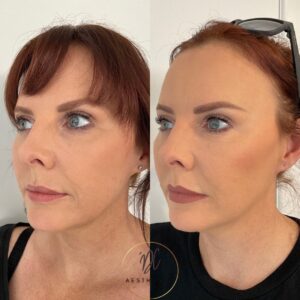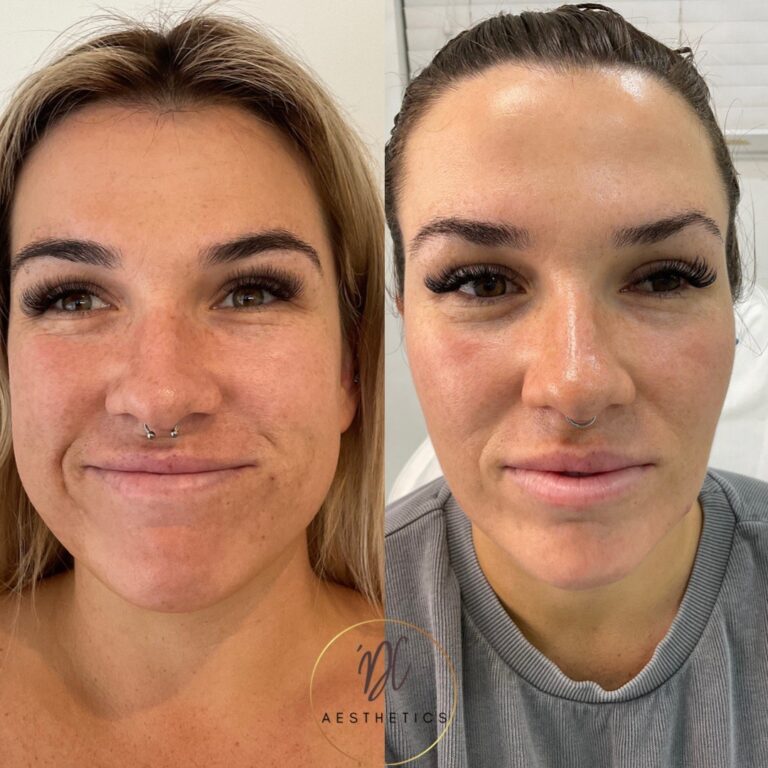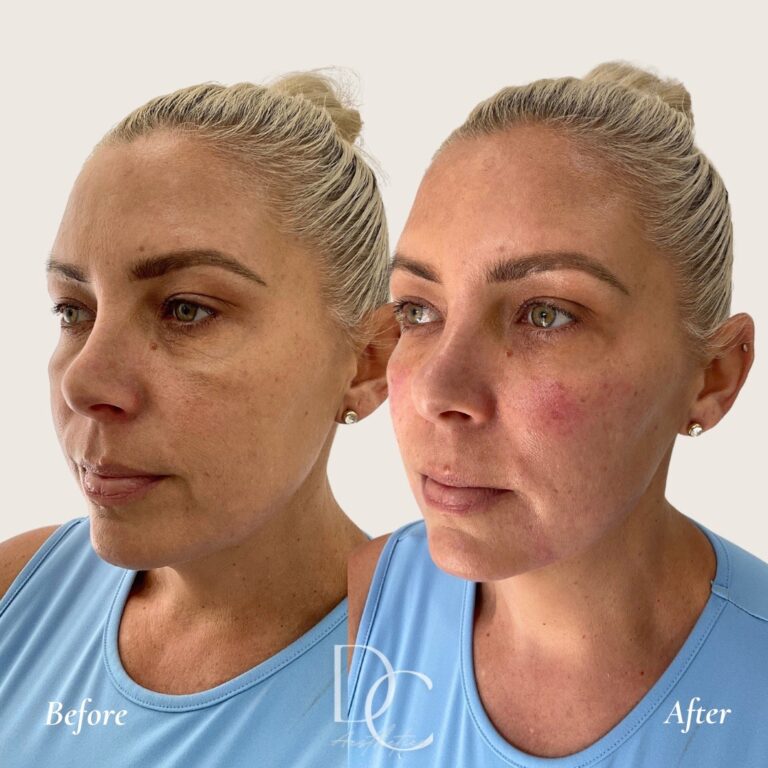Most Common Question About Cheek Fillers
Have you noticed that your face has changed and facial features look more saggy? Do you long for the sculpted and defined cheeks? Cheek fillers might be the answer you’ve been looking for. In this comprehensive guide, we’ll answer some of the most popular questions about cheek fillers to help you understand what to expect and whether this non-surgical cosmetic treatment is right for you.

Cheek Fillers | DC Aesthetics Injectables & Skin
1. What Are Cheek Fillers?
Cheek fillers, also known as dermal fillers or injectable fillers, are a cosmetic procedure designed to enhance and restore volume to the cheeks especially around cheekbones. They can help combat the signs of aging, such as hollowed or sagging cheeks and eyes, by adding fullness and definition. This provides the illusion of a more defined bone structure in the face. By injecting volume under your skin layer, cheek fillers can also smooth out wrinkles and fine lines especially around the eyes.

Cheek Fillers Before After | DC Aesthetics Injectables & Skin
2. How Do Cheek Fillers Work?
Cheek fillers typically consist of hyaluronic acid similar to the one which can be found naturally in our bodies. It contains a small amount of lidocaine, which helps to reduce any pain and ensure a comfortable experience. When injected into the cheeks, dermal fillers add volume, which can create uplifted appearance and contour the face.

Cheek Fillers Before After | DC Aesthetics Injectables & Skin
3. Are Cheek Fillers Painful?
Most people report only minimal discomfort during cheek filler injections, but it may vary depending on individual. Many providers use topical numbing creams or provide local anesthesia to ensure a more comfortable experience.
4. How Long Do Cheek Fillers Last?
The longevity of cheek fillers varies based on factors such as the type of filler used, individual metabolism, volume injected, and lifestyle. On average, results can last from 12 months to 2 years. Maintenance treatments may be necessary to sustain the desired effect.

Cheek Fillers Before After | DC Aesthetics Injectables & Skin
5. What Are the Risks and Side Effects of Cheek Fillers?
Common side effects may include temporary swelling, bruising, redness, itchiness and tenderness at the injection site. These typically resolve within a few weeks. Serious complications, while rare, can include infection, asymmetry, filler migration, bumps and lumps, vascular issues leading to skin necrosis, visual loss or stroke. Choosing an experienced and qualified provider is crucial to minimize risks. It is also important to have a comprehensive consultation with cosmetic practitioner before undergoing any of these treatments.
6. Can I Achieve Natural-Looking Results with Cheek Fillers?
When performed by an experienced and skilled provider, cheek fillers can produce subtle and natural-looking results, restoring lost volume. If the procedure done correctly, cheek filler can enhance natural facial features rather than appearing artificial.
To achieve natural-looking results, firstly take the time to research and choose a reputable and experienced medical professional for your cheek filler treatment. Look for reviews and before and after photos to ensure their match your expectations.
Schedule a consultation with the chosen Aesthetic Practitioner to discuss your goals, concerns, and medical history and CLEARLY communicate your desired outcome. Start with a conservative amount of filler and gradually build upon it if necessary.
7. Do Cheek Fillers Require Surgery?
No, cheek fillers are a non-surgical alternative to cheek augmentation or a facelift. Cheek fillers treatment do not require invasive surgery and extended downtime.
8. What’s the Recovery Time After Cheek Fillers?
Recovery time is minimal for most people. You can usually return to your daily activities immediately after the procedure. Some redness, swelling or bruising is common after the treatment and can last up to a few weeks. Usually you can use mineral based make up the next day after the treatment. If any complications occur, they need to be addressed immediately and that may prolong treatment, healing and recovery time.
9. Can Cheek Fillers Be Reversed?
Yes, hyaluronic acid cheek fillers can be reversed if you’re not satisfied with the results or any complications happen. Hyaluronidase, an enzyme, can be used to dissolve the filler. Make sure you check with your aesthetic practitioner that filler dissolvent is stocked in the clinic before any filler treatment.
10. How Much Do Cheek Fillers Cost?
The cost of cheek fillers varies depending on several factors, including the type of filler used, the provider’s location, the provider itself and the amount of filler needed. On average, prices start from five hundred and may range up to a few thousand dollars per treatment.
In conclusion, cheek fillers are non-surgical cosmetic treatment to restore volume to your cheeks that can last up to 2 years. If you’re considering this cosmetic treatment, consult with a qualified medical professional who can provide personalized advice, introduce you to all possible options, risks involved and ensure you achieve the desired results safely and effectively.
If you have any further questions or are interested in scheduling a consultation, reach out to our nurse Diana who is always happy to answer all your questions.
Disclaimer: Please be advised that the before and after images showcased for cosmetic non-surgical procedures have not been edited or tampered. The displayed photos are an accurate representation of actual patients results. However, individual outcomes may vary, and it is crucial to consult with a Medical Practitioner or Registered Nurse to discuss personalised treatment plan and options. This content is for informational purposes only and should not be considered as a medical advice. Patients have willingly granted consent for the sharing of their images for informational purposes.











